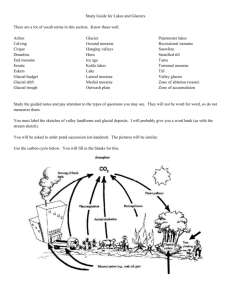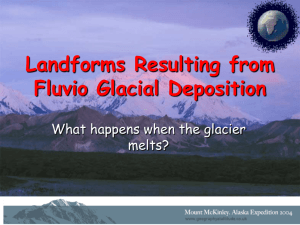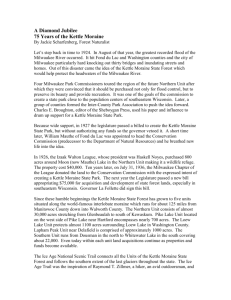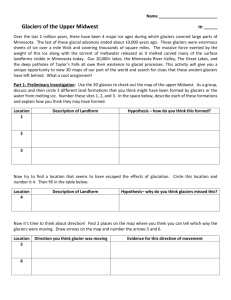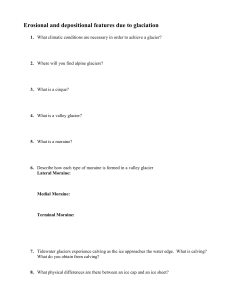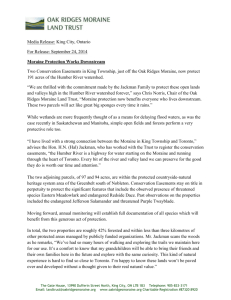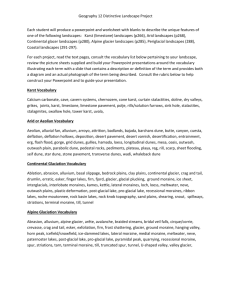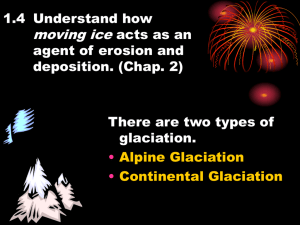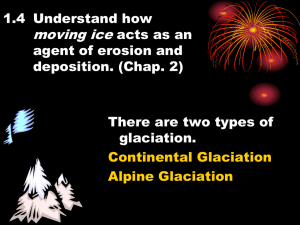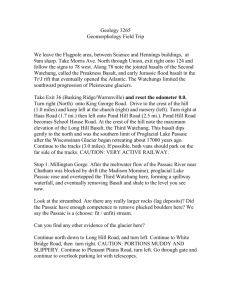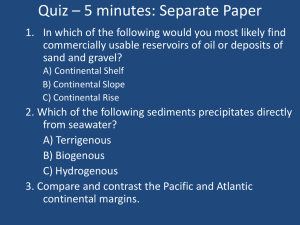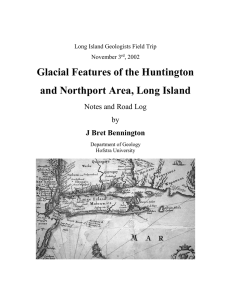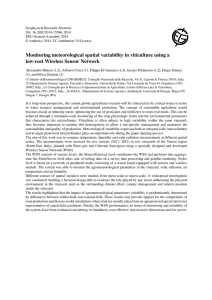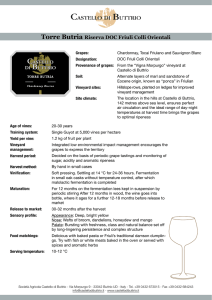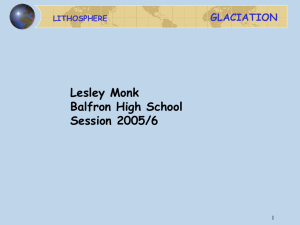Glacial Features of MV - Part Three - final copy
advertisement
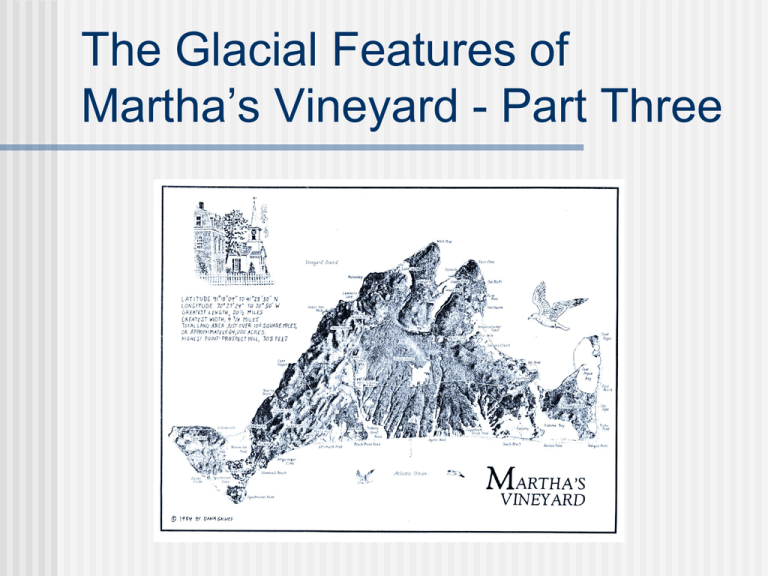
The Glacial Features of Martha’s Vineyard - Part Three A topographic map of MV clearly shows the bottoms in the outwash plain, as well as the moraines. Can you see where the actual edge of the ice would have been? The outwash plains of the Vineyard today are characterized by the flat, sandy central (interior) and southern part of the island. The outwash plain is an ideal place to build an airport. The moraine of the Vineyard today is characterized by the hilly areas, especially up-island (Chilmark, West Tisbury). The moraine is an ideal place for sledding in the winter! Notice all the boulders in the moraine. They are called erratics. Most of them are from far away. How did they get here? Many of these erratics have been put to good use by people. Some erratics are enormous. What is strong enough to move such massive rocks such great distances? Another key feature of the moraine is called a “kettle hole”. You know them better as the freshwater ponds of the Vineyard. How could such a hole form? Why are they only found in the moraine (not in the outwash)? Not all kettle holes contain water. This diagram shows how a kettle hole can form. Summary: Moraine vs. Outwash Deposited directly by the ice. Made of sand, silt, gravel, rocks and boulders (erratics) of all sizes. Hilly landscape. Northeastern and northwestern sides of MV. Contain kettle holes (freshwater ponds). Deposited by glacial meltwater. Form in front of the ice. Mostly sand and silt. Flat landscape. Central and southern parts of MV Contain bottoms (dried up streams of glacial meltwater).
